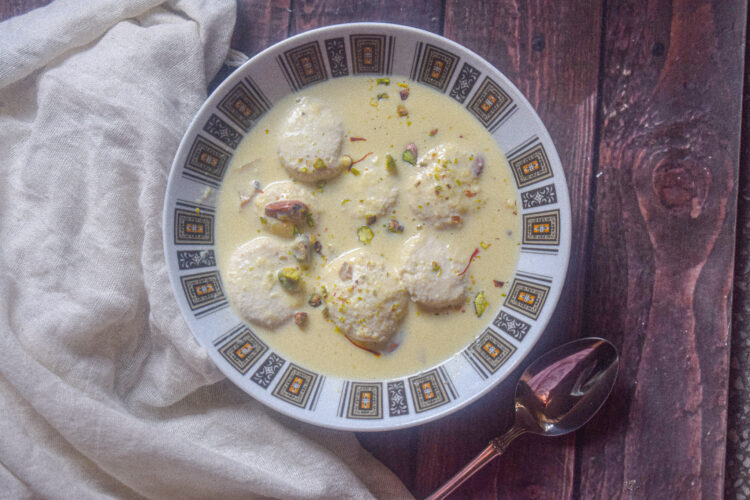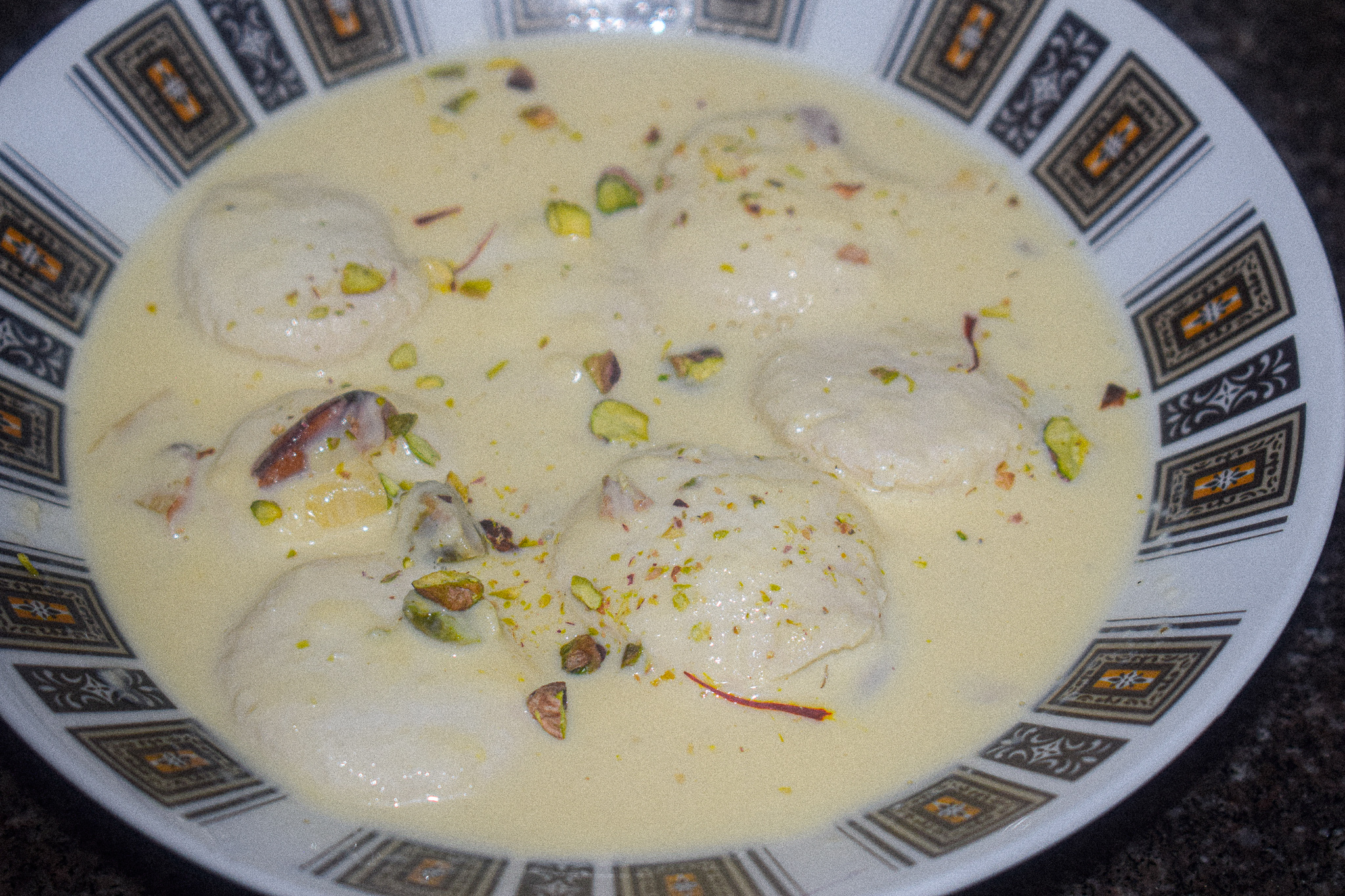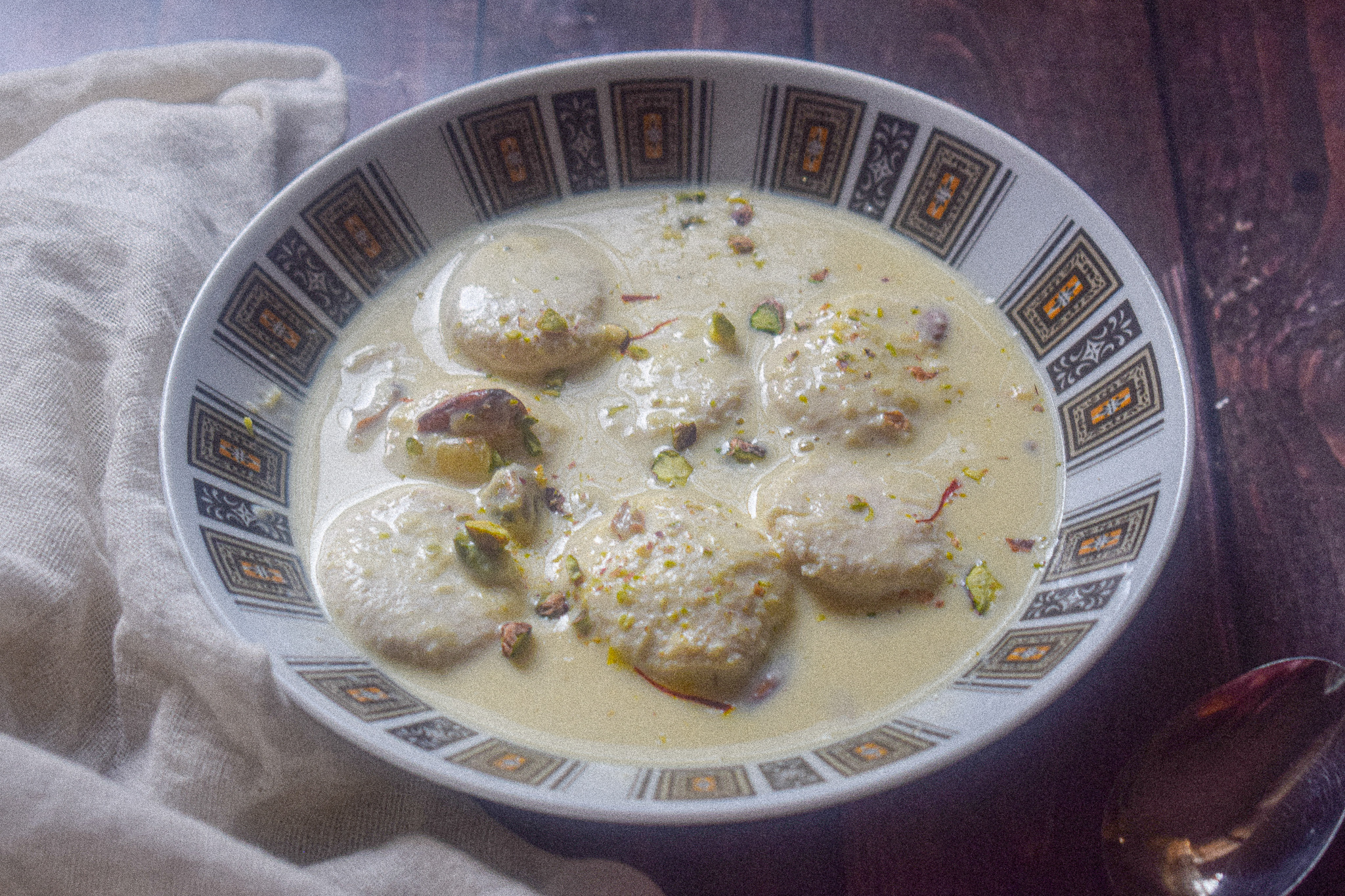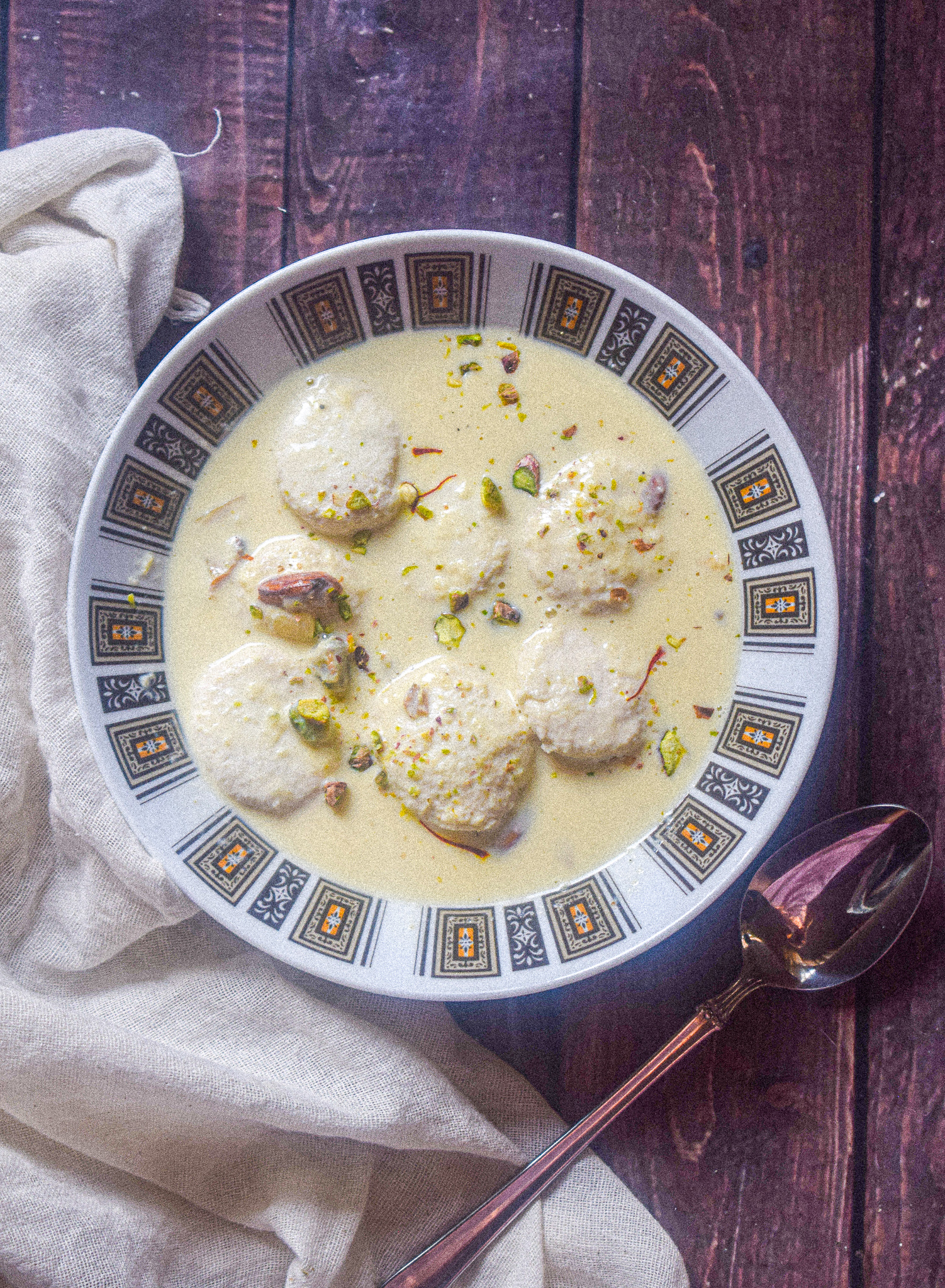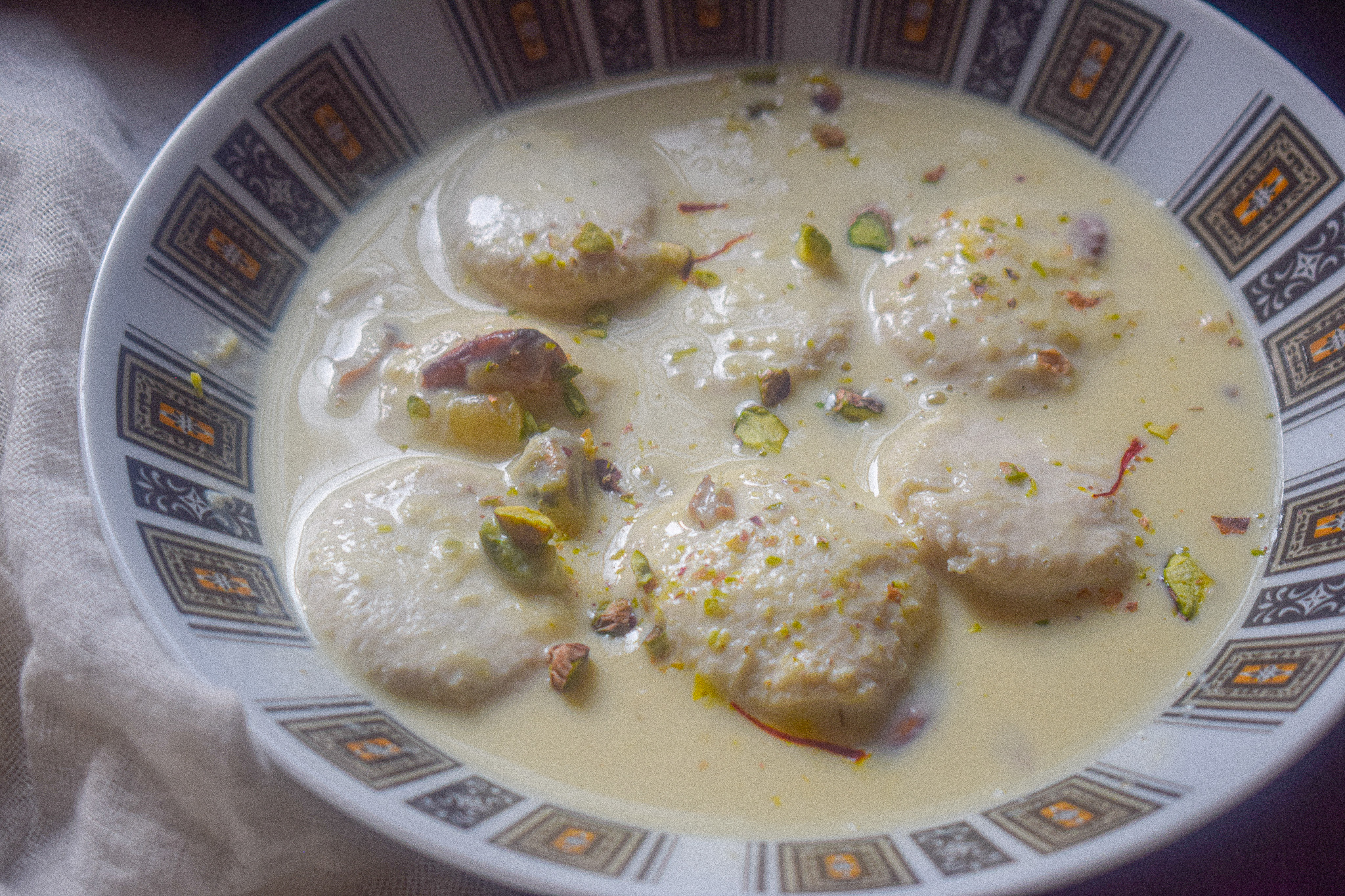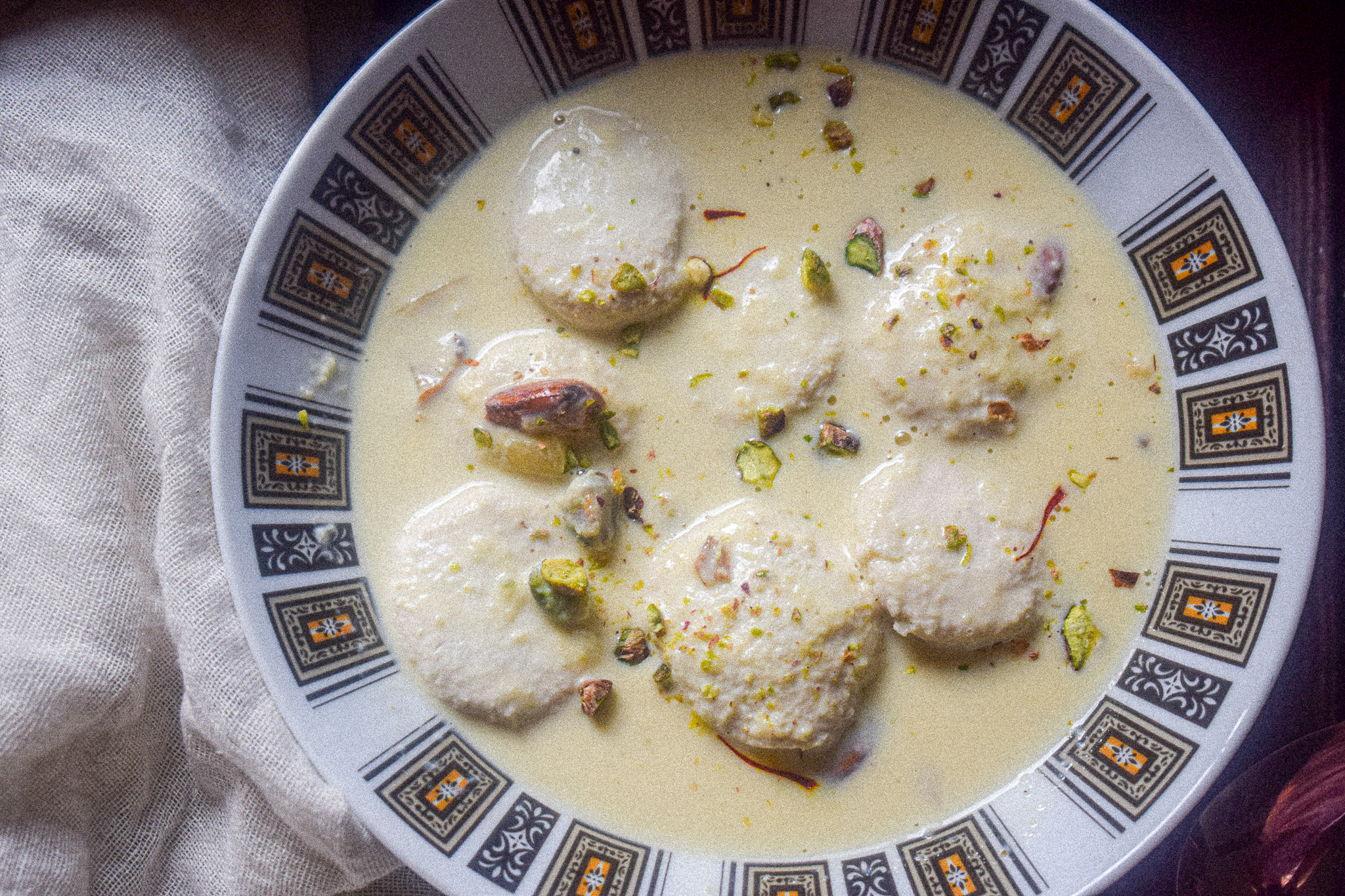Any Indian festival is incomplete without a widespread variety of sweets. Rasmalai is one of the most popular classic Indian sweets – Soft, delicate and spongy chhena dunked in sweet, thick, creamy and flavoursome milk – it is nothing short of a dream. Everyone loves Rasmalai. Opposed to how we think that making Rasmalai is a complex and elaborated process, it is actually extremely easy and requires only a handful of ingredients to not just replicate, but make better than the store bought version at home.
Rasmalai is a comfort soul food and all of us have our share of happy moments attached with it. I can’t stop but cherish my happy memories attached with this sweet. Rasmalai has always been my favourite mithai. Even though I never had a sweet tooth growing up, I could never say no to Rasmalai. The joy of biting into those soft and sweet sponges dipped in creamy, flavourful milk always made me happy. Rasmalai happens to be the favourite mithai of everyone in my family too. I remember those visits to mithai shops with my parents where we would always have a small kulhad of Rasmalai each. And every time we would exclaim how good it is.
I would always find myself packing some for myself from a sweet shop, for that love of Rasmalai followed me even after I left home. But when I started making Rasmalai at home, there was no looking back. It’s very easy and this version tastes better than anything I have had all my life. And what better time than the festive season to share this recipe? Trust me, once you start making it yourself, you will get hooked and be amazed by how easy it is to curate such a delicacy.
Ingredients in this Rasmalai
Only a handful of ingredients go into making this incredible mithai, however, each of them has their own significance. The key ingredient of this recipe is milk – solely. All the other ingredients are basically supporting actors in this dish.
Milk
Milk is without a doubt, the star ingredient of this recipe, as it is of most Indian sweets. In fact, milk is the single most important main ingredient of both the sponges as well as the broth. It is extremely important to use fresh full fat milk or whole milk for:
- The sponges/rasgullas – to extract the maximum chhena out of the milk and make perfectly soft and spongy rasgullas. Avoid using milk from tetra packs or low fat or skimmed milk as it will affect the spongy texture of your rasgullas.
- The rabri – to make it thick and creamy.
Here’s the recipe:
Prep time – 20 minutes
Cook time – 30 minutes
Ingredients
For the sponges:
- 1 litre full fat milk
- 3 tbsp. lime juice or white vinegar
- 1 cup sugar
- 1 litre water
For the rabri
- 1 litre full fat milk
- 2/3rd cup condensed milk
- 1 tbsp. chopped pistachios
- 1 tbsp. chopped almonds
- ¼ tsp. cardamom powder
- A few strands of saffron
Directions
For the rabri:
- In a large vessel, pour the milk.
- Keep stirring to prevent from burning at the bottom and bring it to a boil.
- After the first boil, add in the condensed milk and mix very well.
- Add in the chopped almonds and pistachios.
- Stir continuously and reduce the milk to half.
- Keep scrapping off the sides and bottoms to retain the maximum cream in the broth.
- Finish off by mixing in a few saffron strands and the cardamom powder into the reduced broth.
- Set it aside to cool down completely while we make the sponges.
For the sponges:
- In a large vessel, pour the milk.
- Stirring continuously, bring the milk to a boil.
- Once the milk comes to a boil, add in the lime juice or white vinegar, one tbsp. at a time and take it off the heat.
- Stir well to separate the milk solids (chhena) from the remnant water.
- Place a strainer over a big bowl.
- Line the strainer with a clean muslin cloth.
- Pour the curdled milk on the lined strainer and stir to drain the excess liquid.
- Wash the chhena with cold water.
- Pick up and twist the muslin cloth to squeeze out the excess liquid.
- Take the chhena out on a plate and knead for about 5 to 7 minutes or till your fingers start to turn oily.
- Make even, equal sized, soft round balls.
- To another pot, add the water and sugar and boil it till the sugar dissolves.
- Then, cover and bring it to a roaring boil.
- Once the sugar syrup start vigorously boiling, add in your chhena balls to it.
- Cover and cook for 5-8 minutes or till the rasgullas start floating on the surface of water.
- Take it off the heat.
- Once it cools down, take one sponge ball at a time and squeeze between your palm and fingers gently to squeeze out excess water and give them a disc shape.
- Dunk the sponges in the broth of pour the broth all over them.
- Chill in the fridge for a few hours before consumptions for the best taste!
Tips to Make The Perfect Rasmalai
Making the perfect chhena can be a struggle sometimes. The sponginess and softness of the chhena is a game changer and hence it is extremely important to make the perfect chhena for your Rasmalai. The following tips will help you make that perfectly soft and spongy chenna every single time.
- Always use full fat milk or whole milk to extract the maximum chhena out of the milk and make perfectly soft and spongy rasgullas. Avoid using milk from tetra packs or low fat or skimmed milk as it will affect the spongy texture of your rasgullas.
- Turn off the heat after the milk comes to a boil and then add your acidic ingredient. If the milk doesn’t start curdling, put it back on the stove and let it curdle.
- Add ice cold water or ice cubes to the milk once it has curdled to stop the curdling process. This helps you get the softest chhena ever.
- A perfectly drained chhena is very important. In order to test whether your chhena is perfect or not, smear a little portion of it on a smooth surface such as your kitchen countertop and check the consistency. If the chhena is too sticky, it still has whey in it and is not ready to be kneaded and needs to be hung and drained for a little longer, whereas if the chhena is too dry and crumbly, it has over-drained and need to be kneaded with wet/moist hands. The perfect chhena when smeared is non-sticky and grainy.
- Do not over-knead or over-boil the chhena. This results in getting hard and dense chhena.
I hope you’ll try this divine, soft, and creamy Rasmalai that melts into the mouth recipe for yourself and fall in love with it, just like I did.
Feel free to reach out for feedbacks, suggestions or connect with me on Instagram or Facebook. Subscribe to my YouTube channel for all my videos and upcoming recipes.

